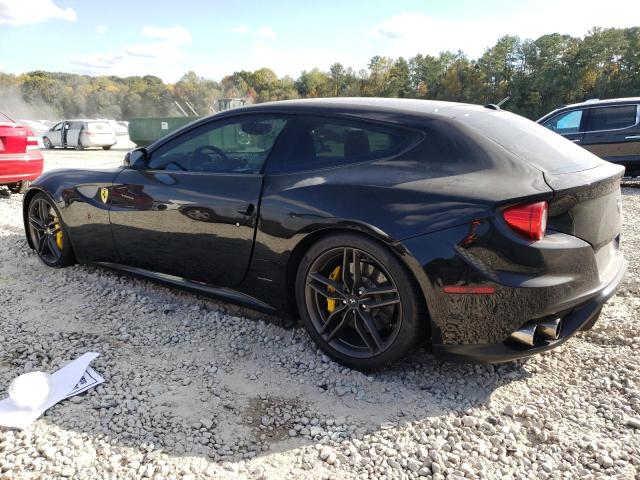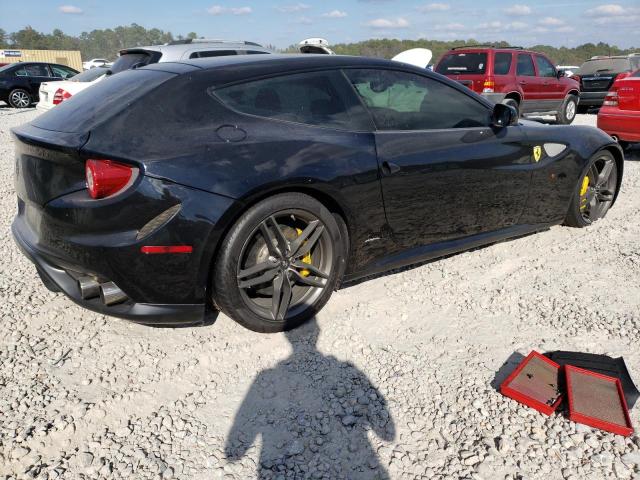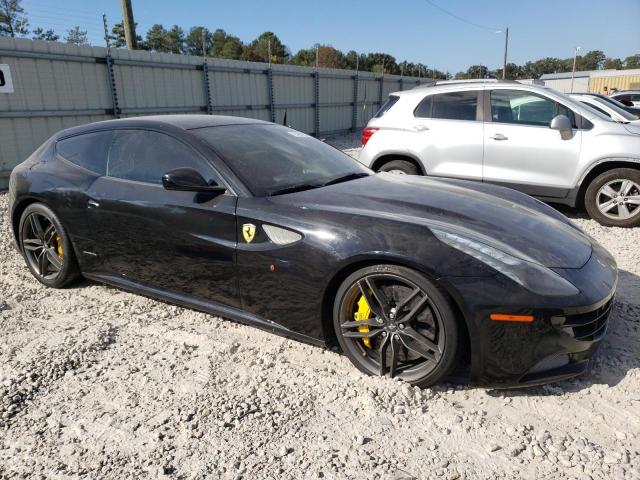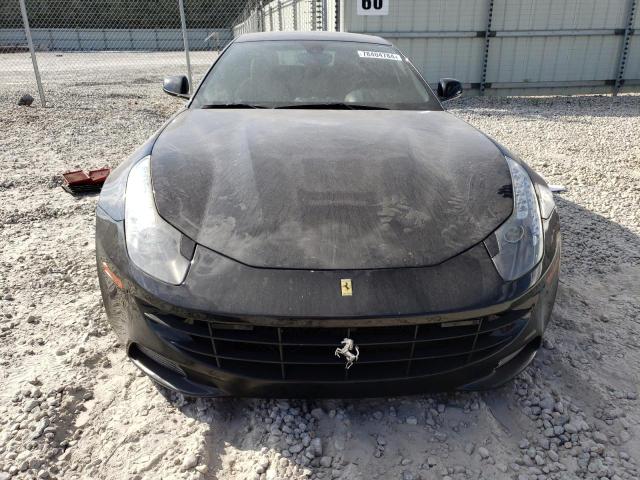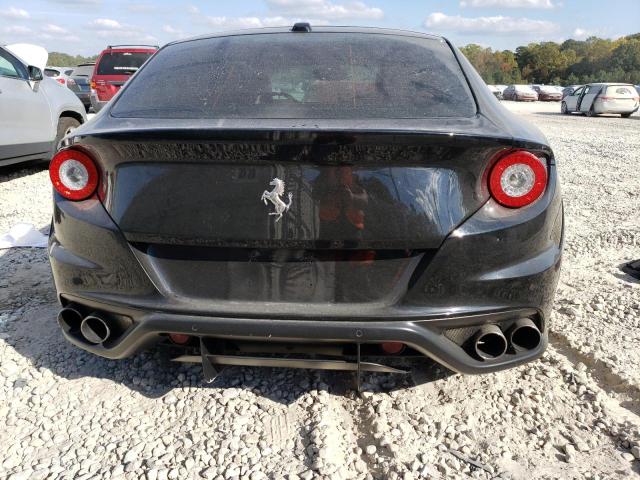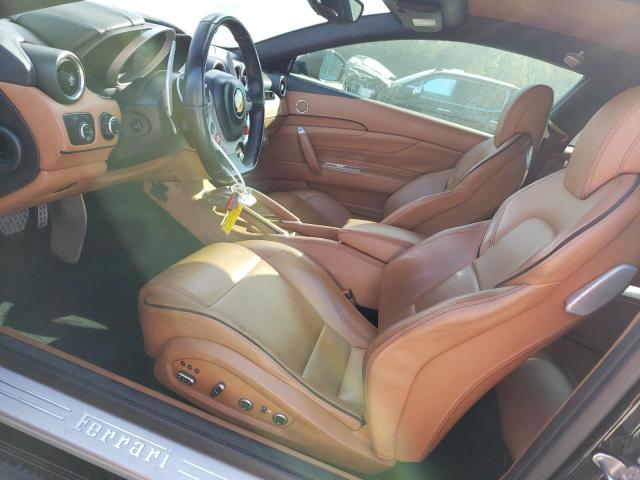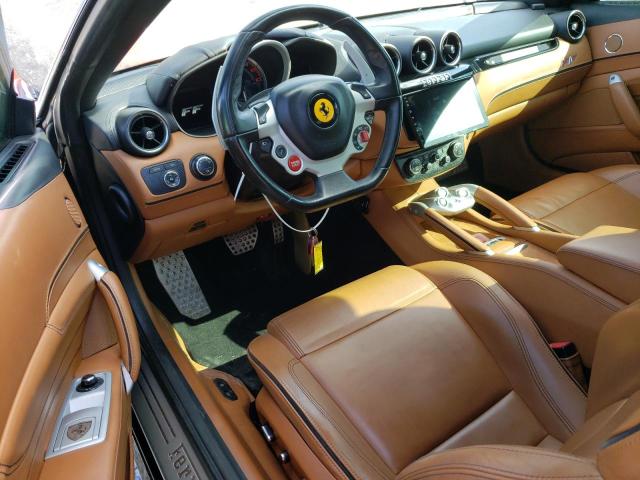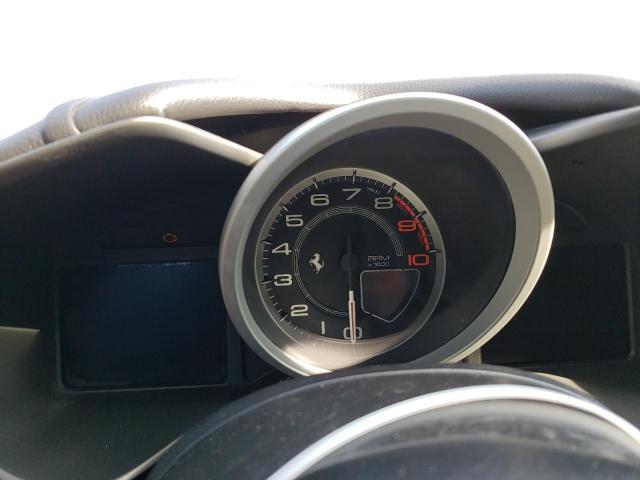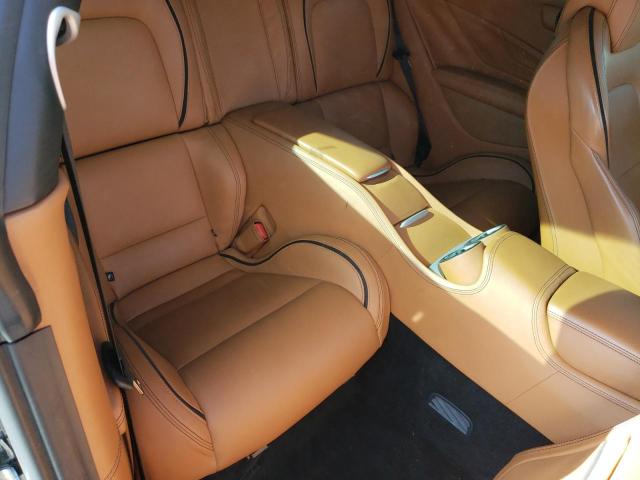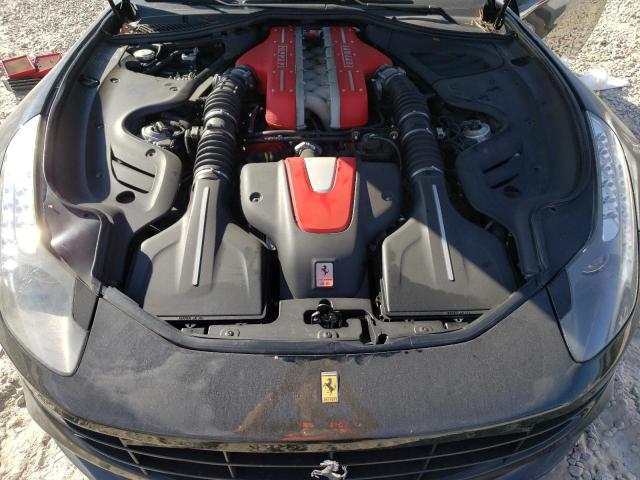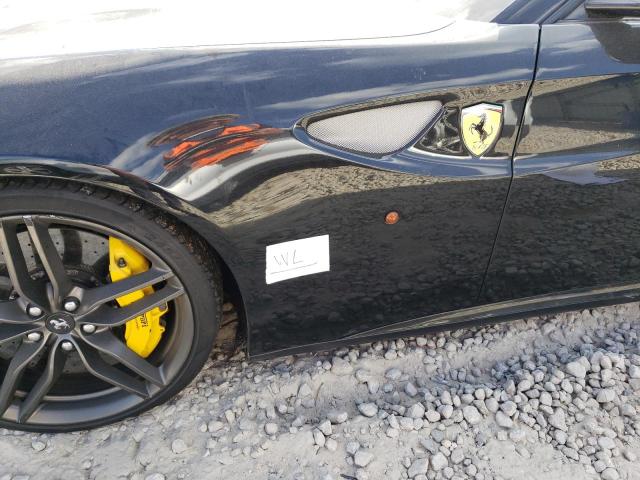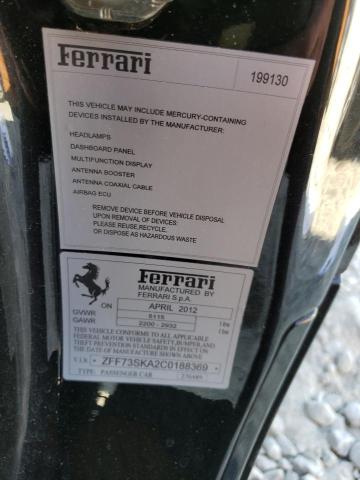2012 FERRARI FF | ZFF73SKA2C0188369
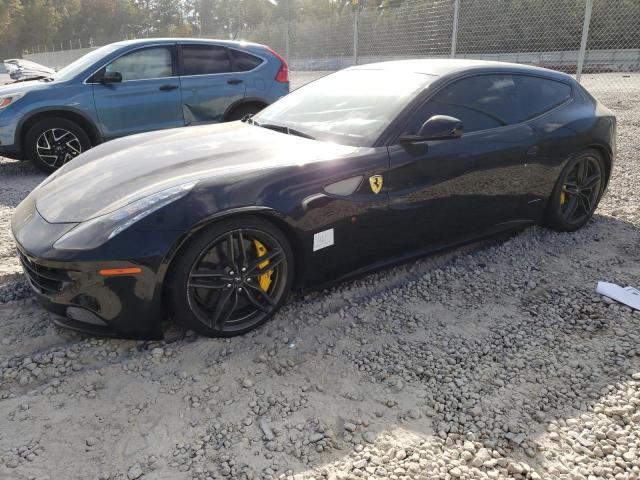 ❯
❯
Specifications
1
~$300,000
Engine: 6.3L naturally aspirated V12
Torque: 683 Nm
0–100 km/h: 3.7 s
The Ferrari FF was a groundbreaking model that redefined what a four-seater GT could be. Powered by a 6.3L naturally aspirated V12 delivering 660 horsepower, the FF accelerated from 0–100 km/h in 3.7 seconds, despite its grand touring size and AWD system.
Its most innovative feature was the 4RM (quattro ruote motrici) all-wheel drive system — a patented Ferrari setup that used a secondary gearbox bolted to the front of the engine to deliver torque to the front wheels only when necessary. This made the FF 30% lighter than conventional AWD systems while maintaining perfect 47/53 front-to-rear weight distribution.
The shooting brake design offered hatchback practicality with two rear seats that could fold flat, making it the most versatile Ferrari ever produced. Yet despite its usability, the FF retained Ferrari DNA: high-revving V12 emotion, sharp steering, adaptive magnetorheological dampers, and a 7-speed dual-clutch transmission with razor-quick shifts.
The interior blended luxury and performance, with hand-stitched leather, four individual sport seats, and a passenger-side infotainment display. On snow, in rain, or at full throttle on the autobahn, the FF delivered confidence and performance in equal measure.
The Ferrari FF earns its place in the performance registry not only for its speed, but for proving that Ferrari could build an all-weather, all-road super GT — without sacrificing the purity of a naturally aspirated V12 driving experience.
Body Styles
A revolutionary 3-door grand tourer with hatchback practicality and a long hood, the FF combined exotic proportions with a shooting brake layout. It was Ferrari’s first AWD road car, using a unique 4RM system that maintained RWD balance and only engaged the front wheels when needed. The FF offered 2+2 seating, genuine luggage capacity, and 335 km/h capability – making it the fastest four-seat production car in the world at launch.
Model Name Meaning (Manufacturer)
“FF” stands for Ferrari Four – referring to four seats and four-wheel drive. This model was a radical departure from Ferrari tradition, replacing the 612 Scaglietti with a more practical and technologically advanced platform. The FF retained Ferrari’s naturally aspirated V12 formula but introduced the 4RM AWD system, a lightweight front-drivetrain assist using a second gearbox mounted ahead of the engine.
Model Name Meaning (Languages)
The abbreviation “FF” was deliberately concise, easy to pronounce in all markets, and instantly conveyed the car’s configuration. In global regions, it was seen as Ferrari’s answer to year-round supercar usability, and gained popularity in places with seasonal climates — from the Alps to Canada and northern U.S. states.
Body & Interior Colors and Rims
The FF was available in an elegant mix of bold Ferrari colors and understated GT tones. Traditional finishes included Rosso Corsa, Giallo Modena, Blu Tour de France, and Grigio Silverstone. Many buyers opted for Grigio Ferro, Blu Pozzi, Bianco Avus, or bespoke Tailor Made paints like Verde British, Rosso Fiorano, and Argento Nürburgring. Dual-tone roof options and matte clearcoats became popular with FF owners seeking distinction.
The interior was deeply customizable, featuring full semi-aniline leather upholstery in Cuoio, Sabbia, Nero, Tortora, or Rosso – often contrasted with colored stitching, carbon fiber trim, or Alcantara inserts. The FF introduced Ferrari’s dual-zone cockpit layout, with optional passenger rev counter display and a luxurious center console with infotainment, climate, and drive mode controls. Heated and ventilated seats, foldable rear seats, and a ski bag pass-through were available for long-haul usability.
Wheels included 20-inch five-spoke alloys, with optional forged racing wheels or diamond-finish multispoke designs. Brake calipers could be specified in red, yellow, black, silver, or special Atelier tones. Standard carbon-ceramic brakes and the long wheelbase provided excellent grand touring stability. Front and rear fascias could be upgraded with carbon splitters, diffuser fins, and Scuderia fender shields.
Top Expensive Options
- Electrochromic Glass Panoramic Roof: ~$15,000
- Diamond-Finish Forged Wheels (20”): ~$6,000
- Carbon Fiber Driving Zone + LED Steering Wheel: ~$5,200
- Premium JBL Professional Hi-Fi with Subwoofer: ~$6,400
- Dual-View Parking Cameras (Front + Rear): ~$3,200
- Daytona Seats (Fully Electric with Memory): ~$5,800
- Passenger Display with Rev Counter & Speed: ~$4,500
- Tailor Made Two-Tone Paint or Heritage Finish: ~$10,000–$20,000
- Carbon Interior Upgrade Pack: ~$7,000
- Leather Rear Parcel Shelf & Fold-Flat Seats: ~$2,800
vs Competitors
The Ferrari FF competed with the Bentley Continental GT, Aston Martin Rapide, Porsche Panamera Turbo, and Lamborghini Aventador in terms of price/performance crossover. However, none of these offered the combination of naturally aspirated V12, AWD, four real seats, and a shooting brake body. The FF was faster and more emotive than the Bentley, more refined and usable than the Rapide, and far more exclusive than the Porsche. Its only true rival might have been nothing at all – the FF stood alone as the most practical Ferrari ever made at that point, without losing its soul.
Fun Fact
The Ferrari FF’s 4RM AWD system was 40% lighter than a conventional AWD system, using a secondary two-speed gearbox mounted at the front of the engine to selectively power the front wheels – only in low-traction, low-speed situations. As a result, it retained the dynamics of a RWD Ferrari, while offering enough grip to drive across snow-covered Alpine passes without chains – something Ferrari publicly demonstrated during winter press drives in Courmayeur and Colorado.
Lot Details
-
Sale Date07/Jan/2025
-
Lot Number78404784
-
Sale document
-
Location
-
Odometer0 miles
-
Primary Damage:WATER/FLOOD
-
Fuel
-
Engine Type6.2L 12
-
Transmission
-
Drive Type
-
Color
Final Bid Ferrari FF (2012)
$37,000
$46,500
$56,000
Specifications
1
~$300,000
Torque:
0–100 km/h:
The Ferrari FF was a groundbreaking model that redefined what a four-seater GT could be. Powered by a 6.3L naturally aspirated V12 delivering 660 horsepower, the FF accelerated from 0–100 km/h in 3.7 seconds, despite its grand touring size and AWD system.
Its most innovative feature was the 4RM (quattro ruote motrici) all-wheel drive system — a patented Ferrari setup that used a secondary gearbox bolted to the front of the engine to deliver torque to the front wheels only when necessary. This made the FF 30% lighter than conventional AWD systems while maintaining perfect 47/53 front-to-rear weight distribution.
The shooting brake design offered hatchback practicality with two rear seats that could fold flat, making it the most versatile Ferrari ever produced. Yet despite its usability, the FF retained Ferrari DNA: high-revving V12 emotion, sharp steering, adaptive magnetorheological dampers, and a 7-speed dual-clutch transmission with razor-quick shifts.
The interior blended luxury and performance, with hand-stitched leather, four individual sport seats, and a passenger-side infotainment display. On snow, in rain, or at full throttle on the autobahn, the FF delivered confidence and performance in equal measure.
The Ferrari FF earns its place in the performance registry not only for its speed, but for proving that Ferrari could build an all-weather, all-road super GT — without sacrificing the purity of a naturally aspirated V12 driving experience.
Body Styles
A revolutionary 3-door grand tourer with hatchback practicality and a long hood, the FF combined exotic proportions with a shooting brake layout. It was Ferrari’s first AWD road car, using a unique 4RM system that maintained RWD balance and only engaged the front wheels when needed. The FF offered 2+2 seating, genuine luggage capacity, and 335 km/h capability – making it the fastest four-seat production car in the world at launch.
Model Name Meaning (Manufacturer)
“FF” stands for Ferrari Four – referring to four seats and four-wheel drive. This model was a radical departure from Ferrari tradition, replacing the 612 Scaglietti with a more practical and technologically advanced platform. The FF retained Ferrari’s naturally aspirated V12 formula but introduced the 4RM AWD system, a lightweight front-drivetrain assist using a second gearbox mounted ahead of the engine.
Model Name Meaning (Languages)
The abbreviation “FF” was deliberately concise, easy to pronounce in all markets, and instantly conveyed the car’s configuration. In global regions, it was seen as Ferrari’s answer to year-round supercar usability, and gained popularity in places with seasonal climates — from the Alps to Canada and northern U.S. states.
Body & Interior Colors and Rims
The FF was available in an elegant mix of bold Ferrari colors and understated GT tones. Traditional finishes included Rosso Corsa, Giallo Modena, Blu Tour de France, and Grigio Silverstone. Many buyers opted for Grigio Ferro, Blu Pozzi, Bianco Avus, or bespoke Tailor Made paints like Verde British, Rosso Fiorano, and Argento Nürburgring. Dual-tone roof options and matte clearcoats became popular with FF owners seeking distinction.
The interior was deeply customizable, featuring full semi-aniline leather upholstery in Cuoio, Sabbia, Nero, Tortora, or Rosso – often contrasted with colored stitching, carbon fiber trim, or Alcantara inserts. The FF introduced Ferrari’s dual-zone cockpit layout, with optional passenger rev counter display and a luxurious center console with infotainment, climate, and drive mode controls. Heated and ventilated seats, foldable rear seats, and a ski bag pass-through were available for long-haul usability.
Wheels included 20-inch five-spoke alloys, with optional forged racing wheels or diamond-finish multispoke designs. Brake calipers could be specified in red, yellow, black, silver, or special Atelier tones. Standard carbon-ceramic brakes and the long wheelbase provided excellent grand touring stability. Front and rear fascias could be upgraded with carbon splitters, diffuser fins, and Scuderia fender shields.
Top Expensive Options
- Electrochromic Glass Panoramic Roof: ~$15,000
- Diamond-Finish Forged Wheels (20”): ~$6,000
- Carbon Fiber Driving Zone + LED Steering Wheel: ~$5,200
- Premium JBL Professional Hi-Fi with Subwoofer: ~$6,400
- Dual-View Parking Cameras (Front + Rear): ~$3,200
- Daytona Seats (Fully Electric with Memory): ~$5,800
- Passenger Display with Rev Counter & Speed: ~$4,500
- Tailor Made Two-Tone Paint or Heritage Finish: ~$10,000–$20,000
- Carbon Interior Upgrade Pack: ~$7,000
- Leather Rear Parcel Shelf & Fold-Flat Seats: ~$2,800
vs Competitors
The Ferrari FF competed with the Bentley Continental GT, Aston Martin Rapide, Porsche Panamera Turbo, and Lamborghini Aventador in terms of price/performance crossover. However, none of these offered the combination of naturally aspirated V12, AWD, four real seats, and a shooting brake body. The FF was faster and more emotive than the Bentley, more refined and usable than the Rapide, and far more exclusive than the Porsche. Its only true rival might have been nothing at all – the FF stood alone as the most practical Ferrari ever made at that point, without losing its soul.
Fun Fact
The Ferrari FF’s 4RM AWD system was 40% lighter than a conventional AWD system, using a secondary two-speed gearbox mounted at the front of the engine to selectively power the front wheels – only in low-traction, low-speed situations. As a result, it retained the dynamics of a RWD Ferrari, while offering enough grip to drive across snow-covered Alpine passes without chains – something Ferrari publicly demonstrated during winter press drives in Courmayeur and Colorado.

